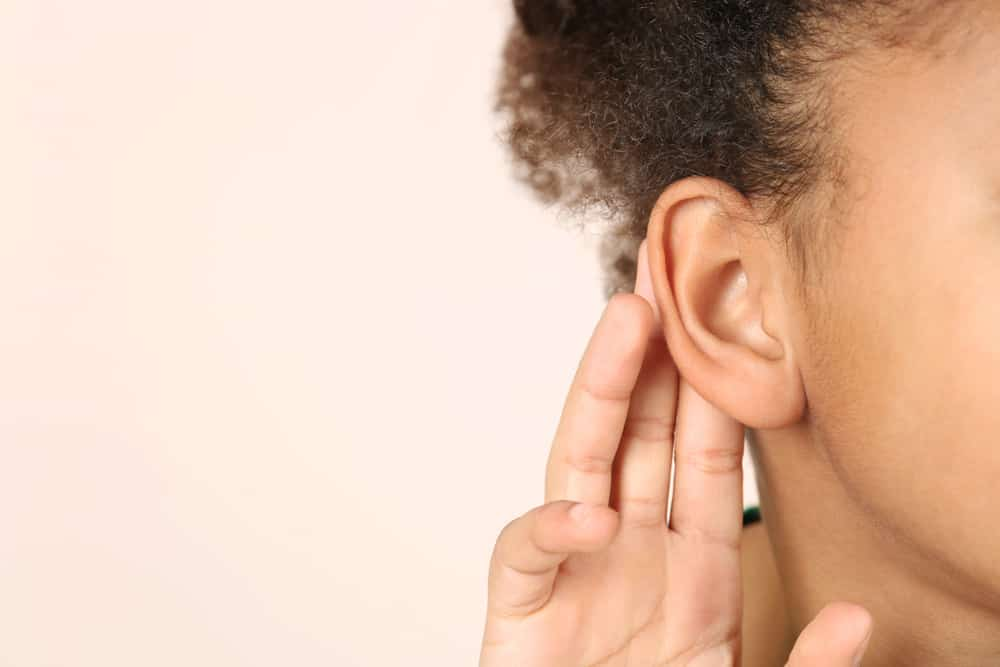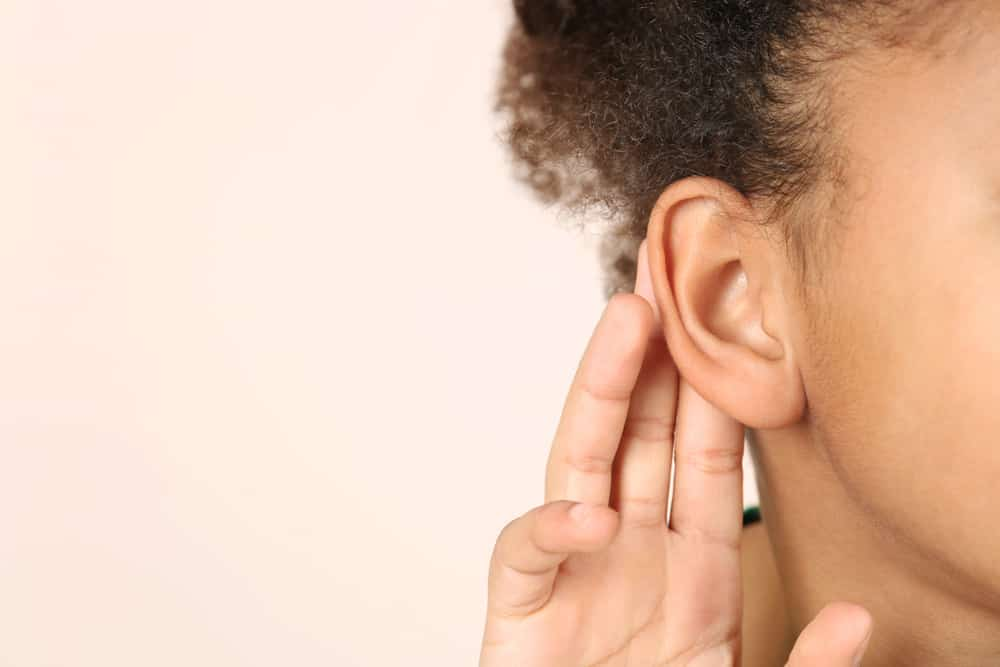Hard of Hearing: Definition, Causes, and Treatment Options
January 19th, 2021 | 5 min. read
By Admin


The term hard of hearing or HoH refers to someone who is unable to hear well. When you’re hard of hearing, life can be difficult. You don’t look as though you have a disability. Therefore, it can often be difficult for people you meet to understand that you're not the same as them.
In this article, we look at hard of hearing causes and hard of hearing treatment options so you can live a fuller life.
What is Hard of Hearing?
When you’re hard of hearing, you can’t hear clearly. You may have been born this way or it could have happened to you later in life. Often, you don’t even know you have a hearing loss when you're hard of hearing. You may not want to face up to it and will perhaps deny that you have an issue with your hearing. You might be totally deaf. It’s estimated that as many as 10 percent of all people have at least some degree of hearing loss, reports Hearing Loss Association of America (HLAA), which is the nation’s largest organizations for individuals with hearing loss.
In the U.S. today it’s thought that 28 million people suffer from hearing loss. It is though that the majority of this group, 25 million people or more, are able to hear well enough that with decent hearing aids they can continue on with their lives as normal.
Usually, people that are hard of hearing continue to rely on spoken or written language as their main means of communicating. Sometimes, others use signs language or Cued Speech to support this. Cued Speech is a method of communication in which a system of hand movements is combined with mouth movements to facilitate understanding and use by people who are hard of hearing or deaf.
You may believe that hearing loss only affects older people. This is not true. Many babies are born being unable to hear properly. So too, do many children and young adults have hearing loss issues.
Hard of Hearing Causes
There are three main types of hearing loss. These are:
-
Conductive hearing loss. Conductive hearing loss is when your problems are due to issues within the ear and its little bones (the stapes, malleus and incus)
-
Sensorineural hearing loss (SNHL). SNHL is when you lose your hearing because of inner ear problems. The condition is also known as nerve-related hearing loss.
-
Mixed hearing loss. The term refers to a combination of both the above types of hearing loss. There could be damage to your auditory nerve or to the middle or outer ear or within the inner ear (cochlea).
Conductive Hearing Loss
Causes of conductive hearing loss include:
-
Fluid in the middle ear
-
Otosclerosis - a hereditary disorder where a bony growth forms around a small middle ear bone. Thus, preventing it from vibrating when it’s stimulated by sound.
-
Impacted earwax
-
Perforated eardrum
-
Foreign body in the ear
-
Benign tumors
-
Allergies
-
Malformation of your outer ear, middle ear structures or ear canal
-
Impaired Eustachian tube function
-
Ear infection
Sensorineural Hearing Loss
This type of hearing loss has the following causes:
-
Disease
-
Virus
-
Exposure to loud noise
-
Autoimmune inner ear disease
-
Head trauma
-
Hearing loss that runs in the family
-
Malformation of the inner ear
-
Otosclerosis
-
Aging
-
Meniere’s Disease
Noise-Induced Hearing Loss
NIHL is the acronym used to describe noise-induced hearing loss. Each and every day, we experience sounds within our environments. Usually, we hear these at safe levels that don’t adversely affect our hearing. However, when we hear sounds that are too loud or that last a while, these can be bad for us.
Sensitive parts of our inner ears, known as hair cells, can be damaged, causing NIHL. Hair cells are tiny sensory cells that convert sound energy into electrical signals that travel to our brains. Once these hair cells are damaged, they can never grow back.
Symptoms of NIHL. Your symptoms of NIHL increase gradually when you’re exposed to loud sound over a protracted time period. The sounds you do hear can become muffled or distorted. You might have difficulties understanding speech. You might not even be aware that you’re losing your hearing. However, a hearing test can tell you for sure.
Sounds that Cause NIHL. You can have noise-induced hearing loss by being exposed only once to an intense sound such as an explosion. You can also get NIHL by being continuously exposed to loud noises over a long period of time. For example, if you work in a noisy garage.
The loudness of sounds is measured in decibels. A humming fridge is 40 decibels, whereas city traffic noise can be around 85 decibels. Noises that can cause NIHL include small firearms, motorcycles, and firecrackers. These all emit sounds between 120 to 150 decibels. Even repeated or long exposure to any sounds around or above 85 decibels can be the cause of hearing loss. Good practice is to always steer clear of noises that are too close, too loud and that last too long.
Effects of NIHL. Your hair cells and auditory nerve are damaged when you have NIHL. Any impulse sounds can result in your losing your hearing immediately. This could be permanent. NIHL is often accompanied by tinnitus. Tinnitus is difficult to deal with and is a ringing, roaring or buzzing sound in your head or ears that sometimes subsides over time. Tinnitus and hearing loss may occur in one or both ears and can be constant or can show up sporadically throughout your life.
Sometimes, exposure to continuous and impulse noise causes only a temporary hearing loss. This is known as a temporary threshold shift. A temporary threshold shift tends to disappear between 16 and 48 hours after loud noise exposure. Noise-induced hearing loss (NIHL) is preventable by using hearing protectors.
Hard of Hearing Treatment Options
If you realize that you can’t hear as well as you use to, you need to seek treatment sooner rather than later. Early treatment can transform your life. There are quite a few ways hearing loss can be treated, including:
Hearing Aids
Modern hearing aids are like tiny wearable computers. The way they work is as follows: ![]()
-
Sound waves come through the microphone and are converted into electrical signals.
-
The amplifier increases the signal strength.
-
The signal is then transformed back into an acoustic signal by a mini loudspeaker.
-
From this receiver, the signal is channeled into the ear through a tiny tube or ear mold
Your hearing aid can be customized by adding any of the following:
-
A telephone switch. A telephone switch is useful for filtering out any background sounds when you’re on the phone. The “T” setting is also useful when utilized in conjunction with the listening systems found in places like worship services, concerts, meetings, and plays.
-
Directional microphones. Directional microphones boost sound that comes straight at you, enabling you to hear conversations more easily.
Today’s hearing aids are discreet, so no one ever need to know you’re wearing one!
Cochlear Implants
Cochlear implants are electronic devices that stimulate the hearing nerves in your inner ear. You can have dramatic benefits with these devices. Cochlear implants work best for people who aren’t reaping any rewards from wearing a hearing aid.
A cochlear implant isn’t anything like a hearing aid in practice. It isn’t used to amplify sound. Instead, it stimulates your auditory nerves sending signals directly to your brain. You need surgery to implant this device. It also takes time and practice to hear well with the implant. For example, you initially may be able to hear voices but you need to take the time to understand what they’re saying. Over time, your brain will adapt.
Middle Ear Implants
Middle ear implants are an option if you’re not a candidate for a hearing aid and your hearing loss isn’t bad enough to opt for a cochlear implant. You wear a microphone about your ear. The microphone picks up sounds and these are then converted into electrical signals that travel through your skin to an implant attached to your tiny middle ear bones. The implant sends amplified vibrations to your inner ear. Next, the nerve signal is sent to your brain and is recognized as a sound. One issue with these implants is that they’re often expensive.
Other Tools and Assistive Devices
To help you further, there are may other hearing assistive devices that can help you manage your hearing loss. These include:
-
Closed captioning. Your TV shows a text display across the bottom of the screen so you don’t miss anything in your favorite shows.
-
Infrared systems. Infrared systems allow you to set your TV volume to your headphones so that others in your household don’t need to listen at full blast.
-
TTY phone. TTY telephone is a tele-typewriter. It allows you to communicate with others who can hear normally. The hearing person’s conversation is typed and shown on the TTY.
-
Alerting devices. These devices use flashing lights to signals sounds like the doorbell ringing or the smoke alarm sounding an alert.
-
Texting. Using your cell phone to text is very useful if you’re hearing-impaired.
-
Service dogs. Sounds a hearing dog can alert you to include doorbells, knocks on the door, smoke or carbon monoxide detector alarms, telephone calls, traffic approaching, and more.
Don’t delay if you feel you have a hearing problem. Book an appointment to get tested by an audiologist for treatment today.
Lorem ipsum dolor sit amet, consectetur adipiscing elit, sed do eiusmod tempor incididunt ut labore et dolore magna aliqua. Sed risus ultricies tristique nulla aliquet enim.
Topics: